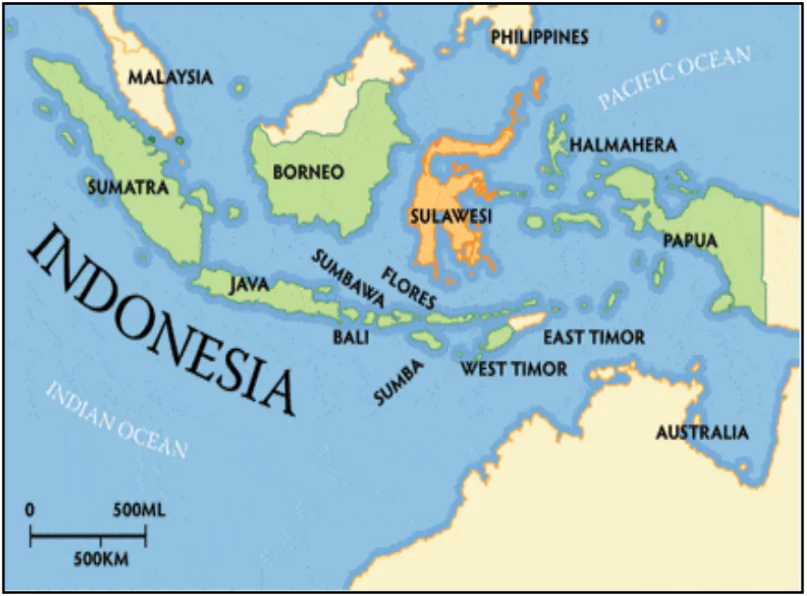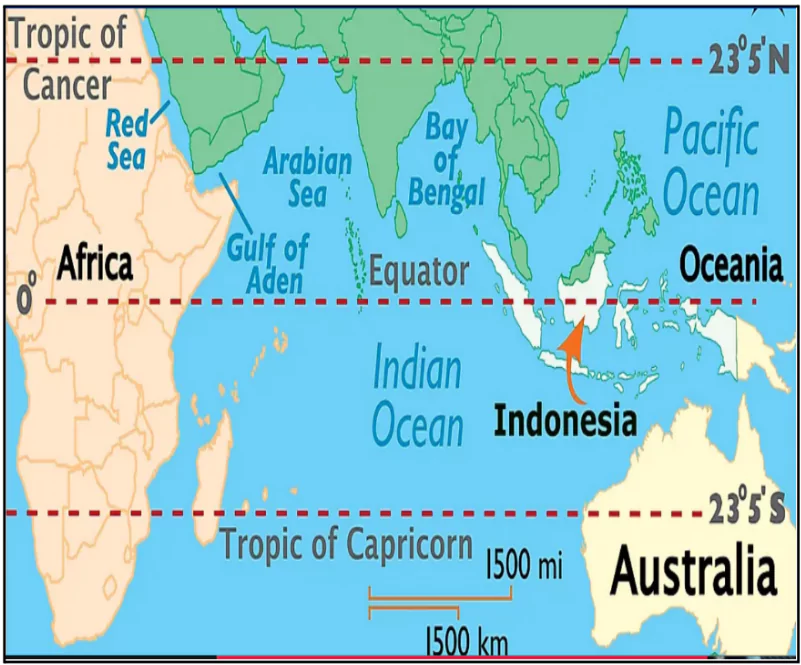Indonesian President Prabowo Subianto will be the chief guest at the Republic Day Parade 2025 , with the Indonesian Army bringing the largest foreign contingent so far to march down Kartavya Path alongside India’s military.
Enroll now for UPSC Online Classes
About Indonesia

Location
- Indonesia is an archipelagic nation located off the coast of mainland Southeast Asia, situated between the Indian and Pacific Oceans.
- Positioned across the Equator, it lies in both the Northern and Southern Hemispheres.
Bordering Nations
- Land Borders: Shares borders with Malaysia, Papua New Guinea, and Timor-Leste.
- Maritime Borders: Shares maritime boundaries with India, Australia, Palau, Singapore, Philippines, Vietnam, and Thailand.

Geography
- Physical Features:
- Consists of over 17,504 islands, including five main islands: Sumatra, Java, Kalimantan (Borneo), Sulawesi, and Papua.
- Part of the “Ring of Fire,” Indonesia experiences frequent earthquakes and volcanic eruptions.
- Houses over 100 active volcanoes, including Mount Merapi and Mount Krakatoa.
- Mount Tambora (8,930 ft, 2,722 m), is an active stratovolcano of Indonesia.
- Highest Point: Puncak Jaya in Papua at 16,502 ft (5,030 m), also the highest island peak globally.
- Rivers: Significant rivers include Kapuas, Barito, Musi, and Digul, which support diverse ecosystems.
- Climate: Dominated by a tropical climate with high humidity and monsoonal rainfall.
Distinct Features
- Largest archipelagic and island country in the world with a total area of 1,904,569 sq. km.
- Fourth most populous country globally, with the highest Muslim population.
- Java, the world’s most populous island, is Indonesia’s administrative and economic hub.
Check Out UPSC NCERT Textbooks From PW Store
Reasons for Indonesia’s High Vulnerability to Disasters
- Geographical Location: Positioned along the Pacific Ring of Fire, Indonesia is prone to frequent volcanic eruptions, earthquakes, and tsunamis.
- Tectonic Activity: Located at the convergence of four tectonic plates, Eurasian, Indo-Australian, Pacific, and Philippine Sea leading to high seismic activity.
- Climate: Tropical climate results in frequent flooding, landslides, and intense tropical storms.
- Coastal Exposure: Extensive coastlines increase vulnerability to sea-level rise and storm surges.
- Population Density: High population density in disaster-prone areas exacerbates the impact.
- Deforestation: Environmental degradation heightens susceptibility to landslides and flash floods.
![]() 17 Jan 2025
17 Jan 2025



